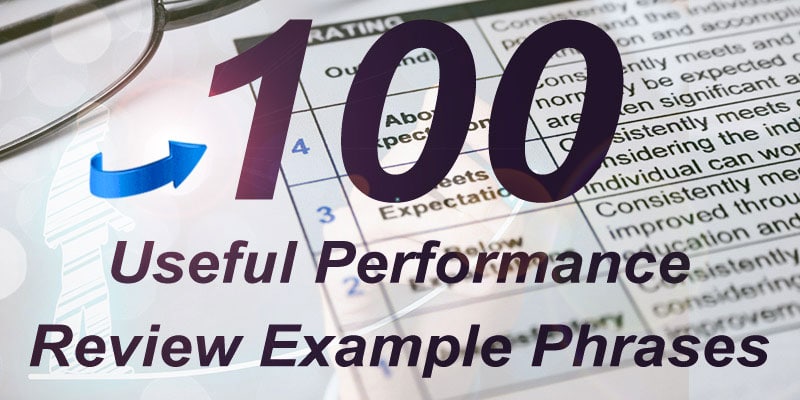Does the prospect of the annual round of performance reviews fill you with a mix of anxiety and dread? You know it’s coming but, rather like Christmas, somehow it always seems to creep up on you and catches you unawares. You want to do a good job but with several team members reporting to you, what can you find to say that’s different? If these thoughts resonate with you, then you are in a good company. Many managers find the performance review season as being akin to that annual visit to the cantankerous and irritable Aunt Maude – it’s something to be endured rather than relished. Or perhaps you are like other supervisors who, despite their best intentions, are always ill-prepared and end up rushing through the process, simply ticking the boxes. This article will be essential reading for any manager that wants to do things differently. After all, the whole point of performance reviews is to produce outcomes that will benefit both the individual employee and the company. Along the way, you may even learn valuable feedback about your own performance as a manager. So, how do you ensure the performance reviews you are responsible for produce valuable outcomes? Well, following the steps we identify here will certainly help put you on the right track.
1. Make Sure You Have The Right Mindset

2. Preparation Is A Must
How would you feel if your manager had clearly not prepared for your performance review and was obviously winging it? It’s fair to say you would feel disappointed, angry and undervalued. It’s essential, therefore, that you extend the same courtesies to your staff as you expect yourself. It just requires some organization and planning on your part. Block out time in your diary for each performance appraisal. And just as you wouldn’t dream of postponing a scheduled meeting with the CEO because of other priorities, so this performance review preparation time should be sacrosanct.
In addition, all good managers should be providing feedback on performance and coaching their staff members throughout the year. Managing performance should never be a one-off annual exercise and so there should be no surprises for the employee. Instead, use the preparation time to think about what the key message is that you want the employee to take away. What is the overall theme you want the discussion to take? Perhaps you want the staff member to focus on developing a particular skill, or maybe you want them to take on extra responsibilities within the team. Whatever the case may be, having an overall message will help to focus on what’s really important in the review meeting. As a result, the outcomes will be clearer and sharper.
3. Collect Feedback From Others

4. Share Information With The Employee In Advance
For it to have any real meaning, the performance review has to be a two-way conversation with the employee. To this end, and also in the spirit of there being no surprises, it’s a good idea to share the agenda and any background information with the employee in advance.
In this context, it’s also essential that employees understand what criteria they are being measured against. The individual needs to know what good performance in their job role looks like and how the organization views their contribution. And so if any form of employee metrics or ratings are being used as part of the review, then the employee should have advance notice of what they are and how they have been assessed.
Encourage the employee to also share their agenda with you in advance. It may be that the staff member wants to focus on career advancement, or perhaps they feel they are deserving of a pay rise. The truth is the employee will also have issues they want to discuss and advance notice means that you can be adequately prepared. The mutual sharing of agendas in advance in this way supports the notion that the performance review is a two-way conversation.
5. Pay Attention To Meeting Logistics
The time and location of the meeting are very important and say a lot about the value you place on the process. For example, if you want your staff member to feel appreciated then avoid scheduling an appraisal for 4 pm on a Friday. Likewise, don’t set the meeting to last for just 30 minutes. And think about the location too. Having the appraisal in your office in full sight of an overflowing in-tray or worse still with interruptions from colleagues or the phone doesn’t really set the right tone. Make it somewhere neutral like a meeting room, but ensure there is a round table to facilitate open discussion. Sitting across from each other at a rectangular table could make the employee feel under pressure as though they are being interviewed. A neutral venue, with a round table and sufficient time for a full discussion, will help to put the employee and indeed yourself at ease.
6. Give Balanced Feedback

In addition, try and use positive language even when you are discussing problems or issues. For example, avoid using negative words like ‘failure’ or ‘weakness’. Instead frame things in more positive, constructive terms by using language like ‘areas to be improved’, or ‘solutions’. The words you use within the performance appraisal have the power to motivate the employee and they also have the power to deflate so choose your words carefully and wisely.
If you are struggling to find the right tone and balance, then check out our 100 useful performance review example phrases. Organized by the different skills, attributes and areas of responsibility common to the vast majority of job roles, you will find plenty of inspiration and food for thought to help you get started.
Furthermore, taking a balanced approach involves actively listening to the employee. This is, after all, a two-way conversation and you need to afford equal time to the employee to express their views. Active listening techniques include asking questions to obtain more information and get a fuller picture, and repeating back what you have heard so that you can check you have clearly understood what the other person is saying.
7. Agree On The Key Points In The Meeting

- Agree on the assessment of the employee’s overall performance in terms of achievements as well as challenges and areas for improvement.
- Identify goals and objectives for next year.
- Be clear about any support issues or tools of the trade that need to be addressed by you as the manager.
- Decide on a development plan to support the achievement of those goals and objectives covering formal learning opportunities as well as workplace-based or on the job training.
And don’t be afraid to ask for feedback on your performance too. There could be useful things that you can learn about the support you offer or your approach as a manager that will help you to improve in your role.
Involving employees in setting targets or specific actions for the individual and the manager is more effective if done as part of the meeting with the active involvement of both parties. Leave this aspect vague and unresolved or worse still as a task for the manager to complete outside the meeting some weeks later and you are doing a disservice not only to the employee but also to the company. It doesn’t have to be a long list of tasks, in fact, it’s more effective if the action points are limited to a few key ones. And don’t forget to add in deadlines. It’s no good having a series of action points if they are all open-ended. The aim here is to have a clear action plan with specific, achievable targets that are valuable to both you as the manager and the employee.
8. Set Up Regular Review Meetings
As we’ve seen, performance review conversations shouldn’t be confined to a one-hour discussion, once a year. Every good manager should be having regular conversations with their employees throughout the year. Having a series of regular meetings scheduled underlines the value you give to that employee and the importance of your relationship with them. In turn, the employee will feel valued, appreciated and listened to which are some of the main drivers for increased employee engagement within organizations.
It also means that you can keep on top of any potential issues before they magnify into something more significant. It’s far more effective to deal with problems as they arise rather than leaving it for a quarterly review meeting when the behavior or issue may have become so ingrained that it’s hard to retrieve the situation.
At the very least you need to be regularly checking on progress made against the targets set out in the action plan. For maximum impact, it should be a living document that is renewed and refreshed on a regular basis.
Performance Review Tips: Main Takeaways For Managers
Performance reviews are an inevitable part of being a manager and the bottom line is the more you put into the process, then the better the outcomes. This doesn’t necessarily mean spending more time than you currently do; it means being more focused and smarter in your approach. Use the tips we’ve identified here to ensure you have the right mindset, are adequately prepared, and involve others in the assessment. Above all though make sure that the employee is involved at every opportunity. The best performance reviews in the most successful businesses are genuinely collaborative exercises. It will probably come as no surprise to discover that these organizations are also the ones that top the polls for the highest percentage of engaged employees. For further help, check out our handy guide in performance review questions for manager’s and employee’s.
And if your organization finds performance reviews or employee engagement generally a challenge, then get in touch with the knowledgeable team at MyHub. Find out how a cloud intranet can positively impact on your bottom line. Contact us for a free demo or no-obligation 14-day trial.









0 Comments